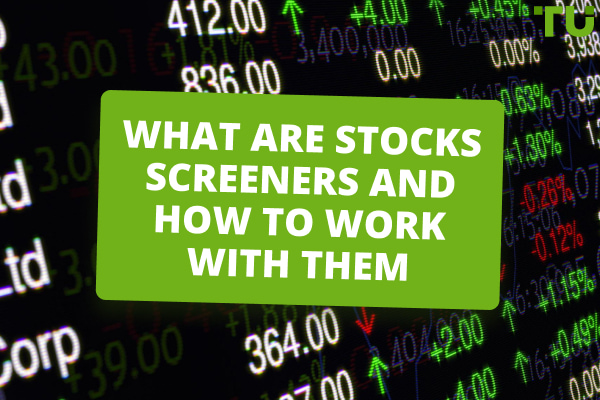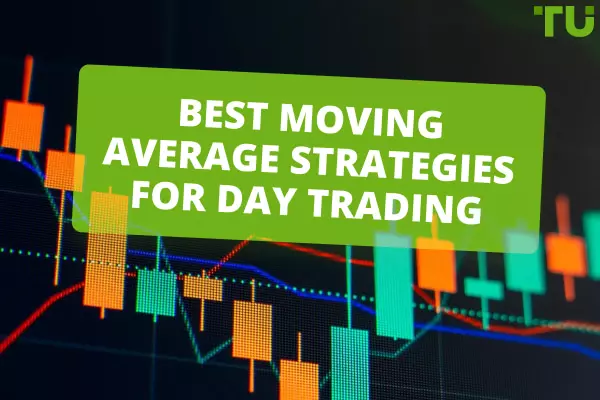4 Steps To Trade Forex With A Demo Account
4 Steps to trade Forex with a demo account:
-
1
Open a demo account with a trusted broker
-
2
Explore platform, charts, market quotes
-
3
Practice trend and counter-trend trading
-
4
Develop a solid trading plan, optimize it
Demo accounts are essential for practicing forex trading without risking real money. Forex trading with a demo account is an essential step for beginners to practice and understand the market dynamics.
In this article, we'll take you through the process, from setting up a demo account to executing trades, helping you gain valuable experience before venturing into live trading.
-
Is it better to first learn forex trading with a demo account?
Yes, using a demo account is highly recommended for beginners to learn forex trading without risking real money.
-
Is a forex demo account free?
Yes, forex demo accounts are usually free. Brokers offer them as a risk-free way for traders to practice and learn without using real money.
-
Are forex demo accounts realistic?
Yes, forex demo accounts are realistic for learning and practice but may not exactly replicate live trading emotions.
-
Can you get real money from a demo account?
No, you cannot withdraw real money from a forex demo account as it is intended for practice with virtual funds.
Step 1. Opening a demo account
Choose a reputable Forex broker. To start with, pick a reputable forex broker noted for providing reliable services and a user-friendly comprehensive trading platform. Look for brokers with positive reviews, a good track record, and different trading instruments.
Create an account. Once chosen, visit the broker's website to open a demo account following their registration process.
Fund your demo account. After registering with your selected forex broker, you'll need to fund your demo account. Usually, demo accounts are pre-loaded with virtual money. In case it needs funding, follow the broker's instructions to add virtual funds to smoothen the real trading conditions.
Best Forex brokers


Step 2. Understanding the trading platform
Familiarize yourself. Familiarize yourself with the trading platform's interface and tools. Do your research about the platform so that it helps you complete the process with ease.
Explore market quotes. Once your demo account is funded, explore the market quotes provided by the broker. Know the currency pairs, exchange rates, and bid/ask prices. This will be helpful to understand how prices fluctuate and the basics of reading forex quotes.
Analyze charts. Consider analyzing charting tools provided by the trading platform to analyze historical price movements.
Analyzing charts in your demo account helps you to upgrade your technical analysis skills, guiding you to make more informed predictions about future market movements.
Step 3. Placing demo trades
Choose a currency pair. Select a currency pair you wish to trade, such as EUR/USD or GBP/USD.
Determine order type. When trading forex on a demo account, practice determining the appropriate order type based on your market analysis. Consider placing a buy order if you anticipate the base currency's value to increase, or a sell order if you expect a decrease.
Set order parameters. In your demo trading, consider setting order parameters to fine-tune your trading strategy. Choose between market orders for immediate execution, limit orders to enter at a specific price, or stop orders to trigger trades at predefined levels. Determine the order size or volume of currency to trade, and set your entry price based on the analysis.
It is helpful for understanding the mechanics of placing orders and increases your ability to implement strategies effectively in live trading.
Monitor trade performance. Once your trade is executed in the demo account, it's time to monitor its performance. Pay attention to how market conditions affect your position and use this experience to refine your trading strategy.
Monitoring trade performance in a risk-free environment helps you develop a disciplined approach to manage trades.
Step 4. Develop and optimize demo trading strategies
Practice trend trading. In your demo trading, focus on trend trading strategies. Identify trends in price movements by analyzing charts. Using this information, you can place trades in the direction of the trend.
Developing skills in trend trading during your demo experience will better your capacity to recognize and capitalize on trends when you go for live forex trading.
If you're just started trading and looking forward to exploring the way to gain through trends, here is a comprehensive guide for you: What is trend trading - a full guide for beginners
Experiment with counter-trend trading. In your demo trading, consider experimenting with counter-trend trading strategies. This includes attempting to profit from short-term price reversals against the prevailing trend.
Analyze the risks linked with counter-trend trading and use your demo account to test different indicators or patterns that may signal potential reversals.
Test technical indicators. In your demo trading, you must not overlook testing the effectiveness of various technical indicators, such as Moving Averages (MA) or Relative Strength Index (RSI).
The hands-on exploration in a risk-free environment will help you understand how to include technical analysis tools into your trading strategy.
If you just begin with trading and looking forward to exploring indicators that suits your trading strategy the best, here is a comprehensive list of leading indicators: TOP 7 Best Leading Indicators in Trading
Test Forex Bots
Testing Forex bots in a demo environment can offer helpful insights into their functionality. They can automate trading tasks, but you need to understand their limitations. Bots may lack adaptability in changing market conditions and should be used cautiously.
Moreover, you must always verify the reliability and security of any bot before considering it for live trading.
To find out which one is the best forex trading robot which suits your trading strategy, read this article: Free Forex Robot - Best Forex Trading Bot Free for 2024
Tips
Acknowledge that demo trading results may differ from real-market performance due to various factors. To navigate this, set realistic expectations for your live trading experience. Set up a comprehensive trading plan that includes clear goals, effective risk management strategies, and well-defined entry and exit criteria.
Here are some tips.
-
Set realistic expectations. Stick to realistic expectations, understanding that success in a demo environment doesn't guarantee the same results in real-market scenarios. This awareness is important for a balanced and informed approach when shifting from demo to live trading.
-
Develop a trading plan. Creating a strong trading plan is essential. Define your goals, whether they're profit targets or skill development. Establish particular entry and exit criteria based on your analysis. A well-structured plan provides structure and helps you stay disciplined, improving your overall trading effectiveness.
-
Seek guidance. Connect with experienced traders for insights and learn from reputable educational resources. Consistent learning from expert individuals and educational materials contributes to your overall trading capability and decision-making skills.
Conclusion
Forex demo accounts are a great way to learn the basics of forex trading without risking any real money. They offer a risk-free environment where you can practice your trading strategies and learn how to use the trading platform.
If you are new to forex trading, it is highly recommended opening a demo account before you start trading with real money. This will give you the time you need to learn the basics and develop your trading skills.
Glossary for novice traders
-
1
Broker
A broker is a legal entity or individual that performs as an intermediary when making trades in the financial markets. Private investors cannot trade without a broker, since only brokers can execute trades on the exchanges.
-
2
Trading
Trading involves the act of buying and selling financial assets like stocks, currencies, or commodities with the intention of profiting from market price fluctuations. Traders employ various strategies, analysis techniques, and risk management practices to make informed decisions and optimize their chances of success in the financial markets.
-
3
Forex Trading
Forex trading, short for foreign exchange trading, is the practice of buying and selling currencies in the global foreign exchange market with the aim of profiting from fluctuations in exchange rates. Traders speculate on whether one currency will rise or fall in value relative to another currency and make trading decisions accordingly.
-
4
Trend Trading
Trend trading is a trading strategy where traders aim to profit from the directional movements of an asset's price over an extended period.
-
5
Index
Index in trading is the measure of the performance of a group of stocks, which can include the assets and securities in it.
Team that worked on the article
Upendra Goswami is a full-time digital content creator, marketer, and active investor. As a creator, he loves writing about online trading, blockchain, cryptocurrency, and stock trading.
Dr. BJ Johnson is a PhD in English Language and an editor with over 15 years of experience. He earned his degree in English Language in the U.S and the UK. In 2020, Dr. Johnson joined the Traders Union team. Since then, he has created over 100 exclusive articles and edited over 300 articles of other authors.
Mirjan Hipolito is a journalist and news editor at Traders Union. She is an expert crypto writer with five years of experience in the financial markets. Her specialties are daily market news, price predictions, and Initial Coin Offerings (ICO).









